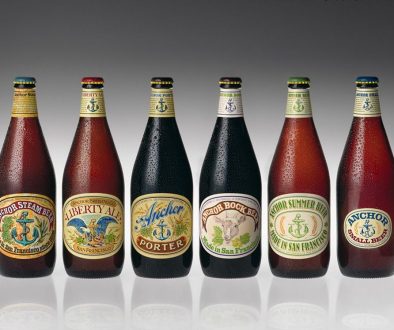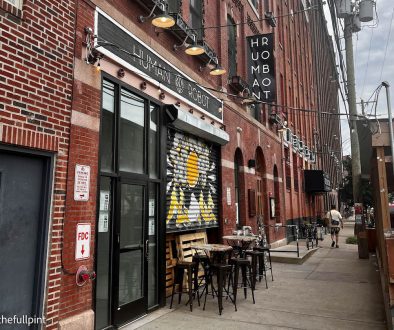Bottle Dating – What Do You Have to Hide?
 Dan blogs about his issues surrounding certain breweries making it difficult to find freshness information on craft beer.
Dan blogs about his issues surrounding certain breweries making it difficult to find freshness information on craft beer.
The single most important aspect for me as a beer drinker is freshness. The fresher the beer, the better it will taste in most cases. Even the best ale or lager can diminish at the hands of father time.
When I got really into craft beer, I took a strong fondness to IPAs, Double IPAs and Pale Ales. After trying as many as I could get my hands on, I found my sweet spot with a dozen or so hoppy ales that I truly enjoy. While some people like trading for Heady Topper and Zombie Dust, I go for the beers I enjoy that I can get within 5 – 10 miles from my home. The first thing I do when I go to pick up a six pack or a bomber is check for the beers freshness. Just within the last few years, most of the known named craft breweries have put some indication of when the beer was bottled or when the beer is best enjoyed by.
I will not be naming names in this blog post, but the breweries who get my attention and beer money are the ones who have clearly written, accessible freshness information. Whether it be printed on the bottle label or screened onto the glass itself, I need to know how old the living ale in the bottle is. I typically like a Pale Ale and IPA no older than 2 months (2 days would be nice) from bottling and 3 months is about as far as I can go with a Double IPA. If I see a beer I really like older than I prefer, I make sure to tell the store staff that the beer is much better within a month or two and that the person that winds up buying that old bottle might not have an enjoyable experience. I also make sure I contact anyone at the associated brewery to let them know there is some old stock floating around my town.
What really bothers me, more than breweries that flat out don’t label, are breweries that make it difficult to find out the beer’s freshness information. Some breweries put the freshness information on the case box, but not the six pack or individual bottle. As you know, many retailers don’t sell the beer by the case, or unload the case to fit into coolers. That leaves this data in the dumpster out back, or in the fuzzy mind of the cashier who unloaded that case a few days prior. Some breweries use what is known as the Julian Calendar code or some other code that needs to be deciphered. It usually takes a quick Google seaerch to find out what each brewer’s code is and how to decipher it. My question to the breweries when I see this is: “What do you have to hide??”
If you have a machine/means of printing data onto your product, why wouldn’t you make it clear, and put it on the single unit/piece? I can only draw conclusions why a brewery would go as far as to print an obscure code on their product. One theory is they are pumping out too much product and pulling beer after the 90 day (a magic number some breweries use for freshness) mark would cost too much money. Scaling back on production to keep things fresher on the shelf doesn’t seem like an option for a company in the business of selling beer, so I get that. Another theory I have is that the company is trying to drive social media marketing to further promote the brand. While the average Joe who goes to Target to buy a 12 pack of beer may not care when their beer is made, the seasoned beer enthusiast will whip out their smart phone and try to “crack the code” to find out the beer’s freshness information. I’ve found myself having to go to certain brewer’s websites to decipher, so if that’s their angle, it sure did work. The only other theory I can come up with, is that the brewers don’t want you to know. I’d like to think that’s not the case, but I’d have to imagine whomever is operating the label machines would be able to program it to print a humanly readable date stamp.
If you went to the store for milk or eggs and saw ‘321785757’ on it, instead of “Best By 11/08/3”, you would probably be furious. Well that’s how I feel when I see that, or no data at all on my fresh ale. Do you agree with me? If so, I encourage you to retweet this blog post calling out culprit breweries. It’s information I believe we should all have easy access too.




October 21, 2013 @ 5:29 pm
I have lived in many different neighborhoods of San Francisco. and I have found there is always that “corner store” that has unbelievably cheap beer. it usually wasn’t a Bud or a Miller that was going for less because that beer seems to sell through. it was something like a seasonal that was out of season or something else oddly out of place.
remember that BIG BREWERY has a beer freshness program where they buy back expired beer from the distributor. usually this buy back doesn’t cover the entire cost. I know one brewery pays 50% or so of the wholesale cost. the idea is to make the distributor partially responsible for fresh beer. duh, right? they are in control of the area.
the old beer isn’t returned supposed to be destroyed. my guess is that beer makes it way from LARGE places that care and watch over their product and when it’s taken away to be smashed it ends up in places that don’t care so much about born-on-dates where it can go “OUT THE DOOR” for a deal. to recap: old beer is “returned”, the returned beer bought back, that beer is destroy’d (aka sold by the corner store), and nobody in that “hood” is ever going to report in about getting an un-fresh beer because that isn’t the point of that beer.
it would not surprise me if every beer in that store was expired. I never looked.